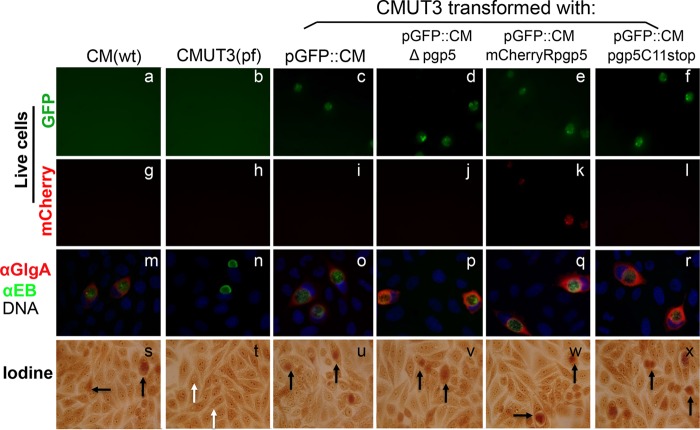FIG 6.
Effect of pgp5 replacement with mCherry or premature termination on GlgA protein expression and glycogen synthesis. Wild-type (wt) C. muridarum (CM) or plasmid-free (pf) CMUT3 organisms with or without transformation were used to infect HeLa cells. Cultures were monitored for live cell imaging for GFP (green, panels a to f) or for mCherry (red, g to l) or used for triple immunofluorescence labeling (m to r) for GlgA protein (red), chlamydial organisms (green), and DNA (blue), or for iodine staining of glycogen accumulation (s to x). Plasmid-free CMUT3 organisms were transformed with intact pGFP::CM plasmid (pGFP::CM, panels c, i, o, and u) or pGFP::CM with pgp5 deletion (pGFP::CMΔpgp5, panels d, j, p, and v), pgp5 replacement by mCherry gene (pGFP::CMmCherryRpgp5, panels e, k, q, and w) or premature stop codon installed at the 11th cysteine residue position (pGFP::CMpgp5C11stop, panels f, l, r, and x). Inclusions positive for glycogen staining were marked with black arrows, while inclusions that lacked glycogen staining were marked with white arrows. Note that GlgA expression was increased in the cultures infected with CMUT3-pGFP::CMΔpgp5 (panel p), CMUT3-pGFP::CMmCherryRpgp5 (panel q), and CMUT3-pGFP::CMpgp5C11stop (panel r) organisms, respectively.

